In Photos: Van Gogh Masterpiece Reveals True Colors
Changing Colors
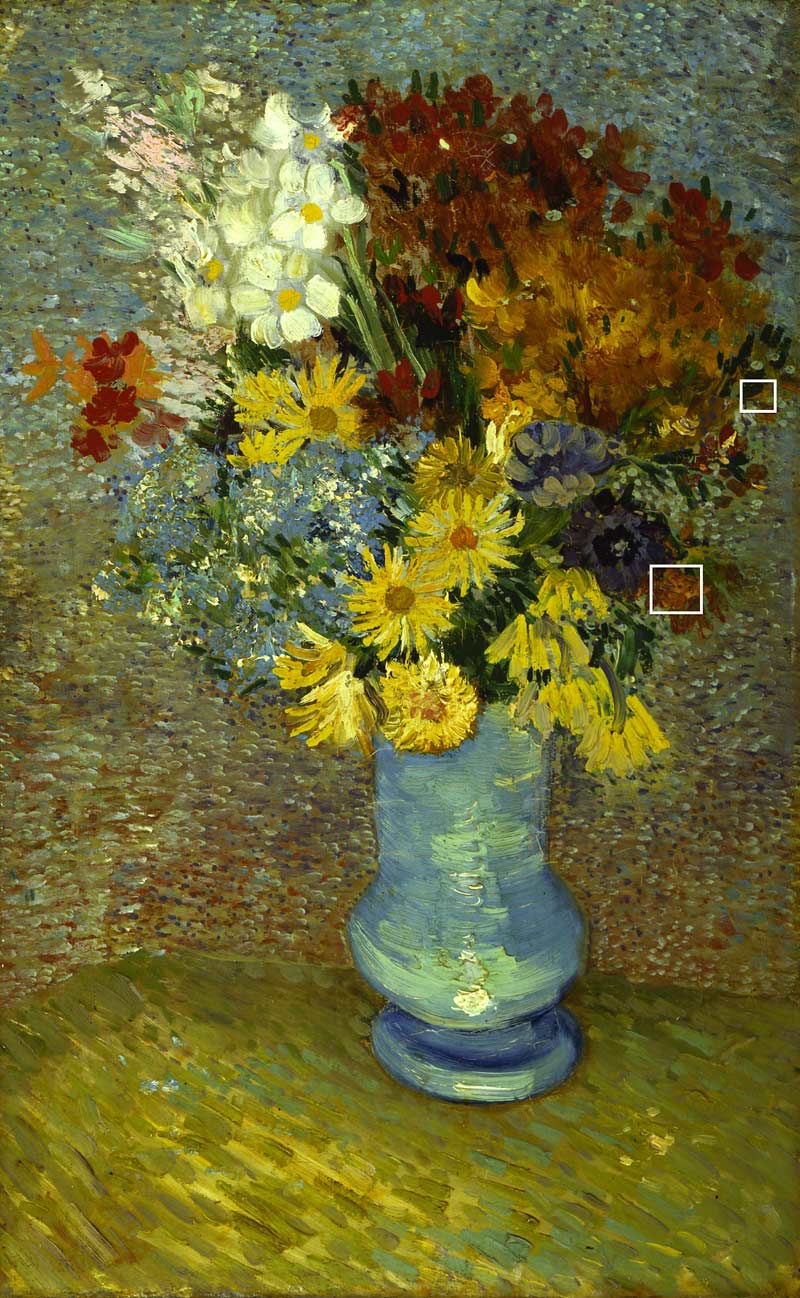
Scientists had noticed an odd color change occurring in Vincent Van Gogh's "Flowers in a blue vase," which he painted in Paris in 1887. Apparently, the yellows were turning orange-gray over time (see the discoloration in the upper right). Researchers reporting in the journal Analytical Chemistry have found a chemical reaction at the interface of a protective varnish and the paint is the culprit. The boxes show where tiny paint samples were taken for analysis.
Yellow to Orange
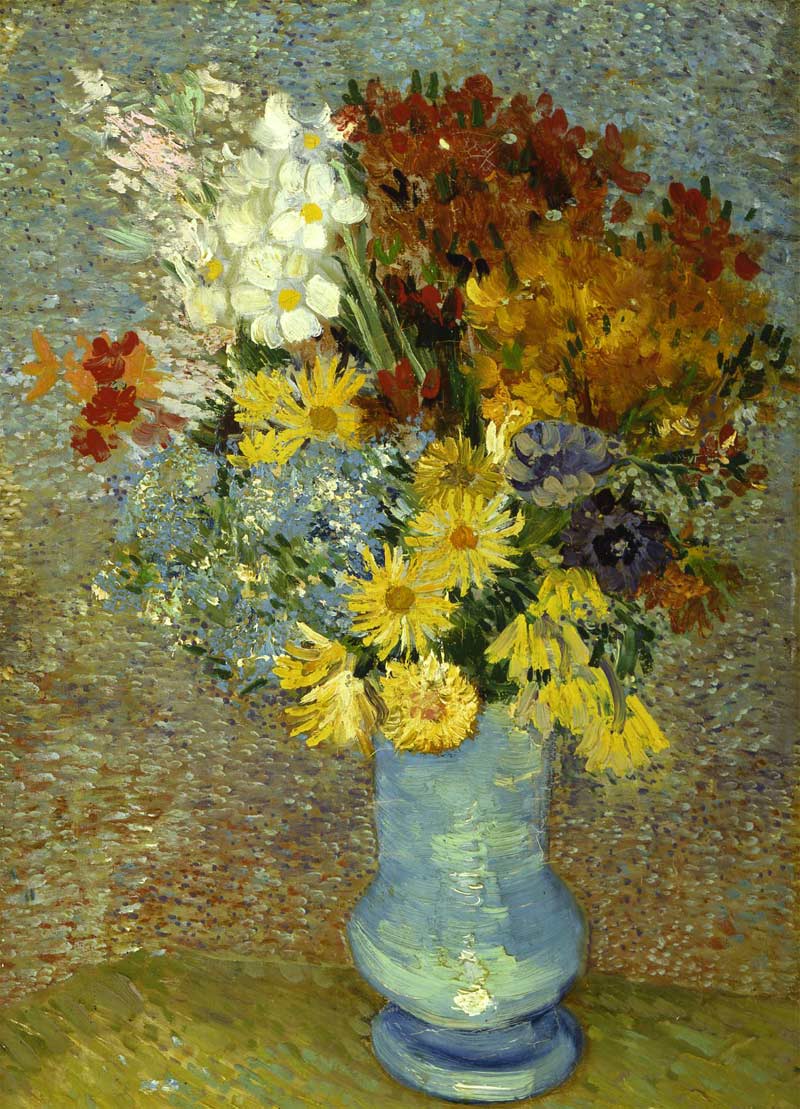
The color-change (from bright yellow to orange-gray) in Van Gogh's "Flowers in a blue vase" can be seen to the right and upper right of the painting. Two microsamples were taken from these areas.
Hidden Chemicals
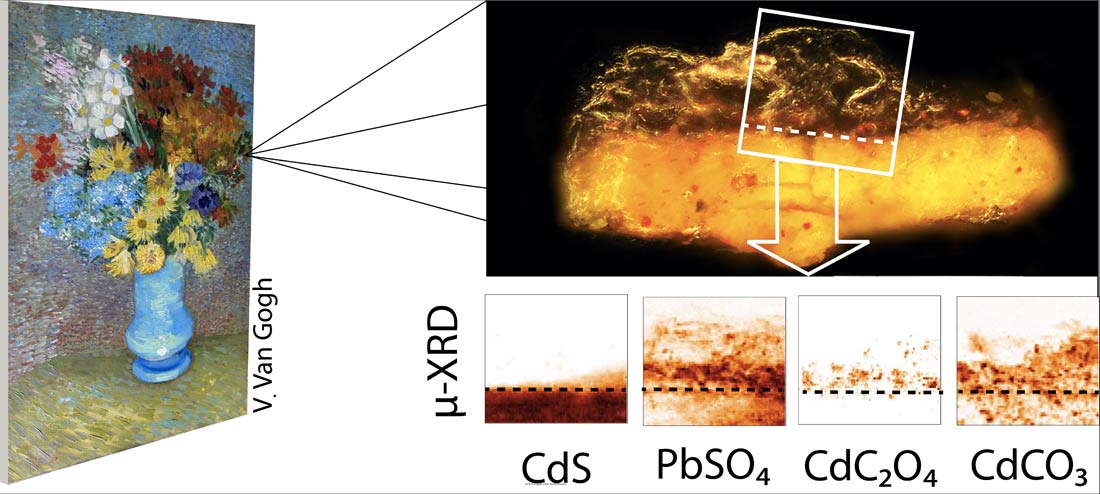
From the tiny paint sample (shown in an optical-microscope image), the researchers looked at levels of four compounds.
Paint Chips
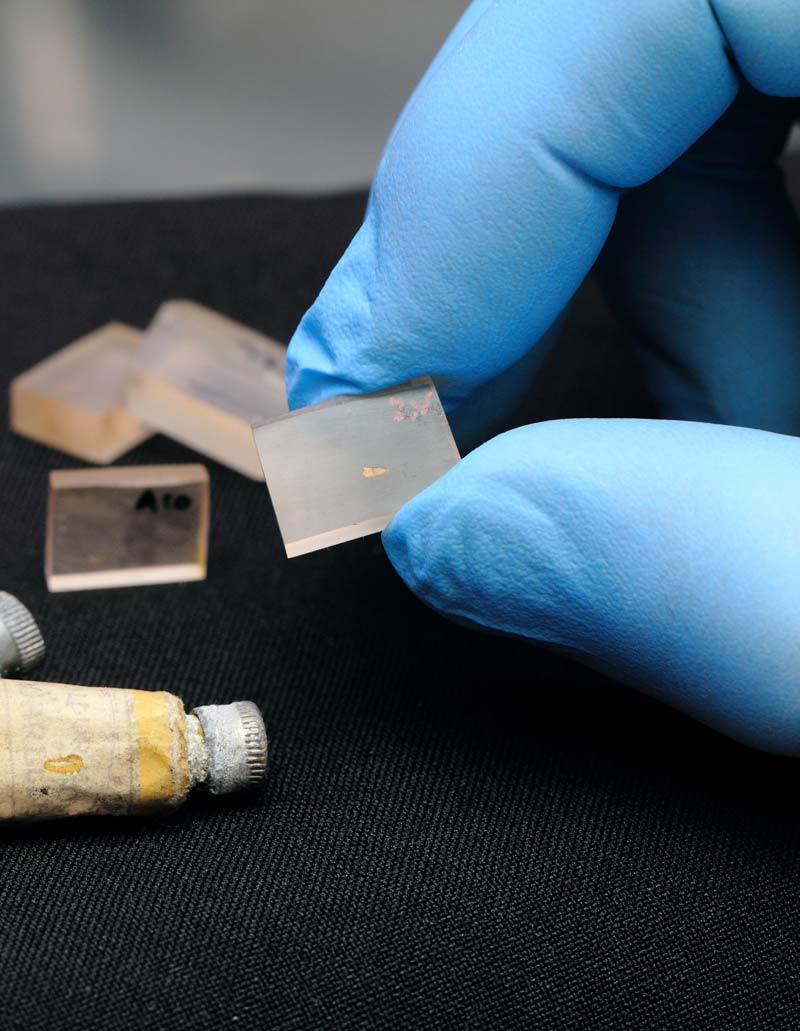
Microsamples from art masterpieces, molded in Plexiglass plates ready for investigation with synchrotron X-rays. The historic paint tube at the bottom is from the personal collection of M. Cotte.
Tiny X-Rays

Artist's illustration of a Plexiglass plate with a microsample mounted for investigation in the vacuum chamber of the synchrotron X-ray microscope. The small spot in the center of the Plexiglass block is the sample from the Van Gogh painting, and the cylindrical tube connects it with the X-ray detector.
Losing Luster
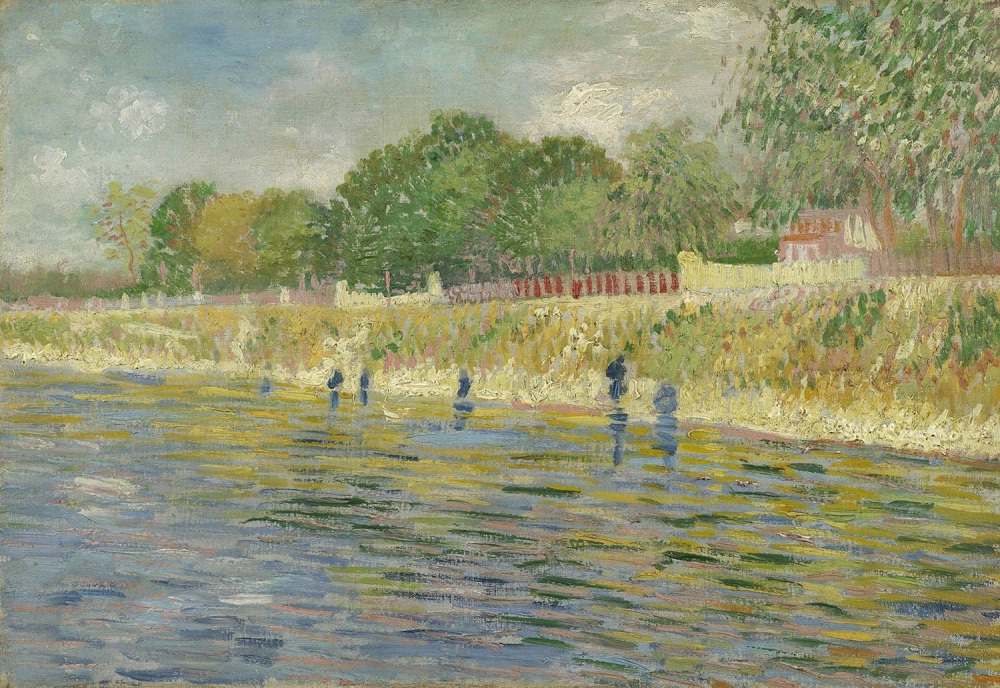
Researchers have also analyzed Van Gogh's "Banks of the Seine" (1887), finding a chemical reaction caused the painting to lose its luster.
Get the world’s most fascinating discoveries delivered straight to your inbox.
Jeanna Bryner is managing editor of Scientific American. Previously she was editor in chief of Live Science and, prior to that, an editor at Scholastic's Science World magazine. Bryner has an English degree from Salisbury University, a master's degree in biogeochemistry and environmental sciences from the University of Maryland and a graduate science journalism degree from New York University. She has worked as a biologist in Florida, where she monitored wetlands and did field surveys for endangered species, including the gorgeous Florida Scrub Jay. She also received an ocean sciences journalism fellowship from the Woods Hole Oceanographic Institution. She is a firm believer that science is for everyone and that just about everything can be viewed through the lens of science.


